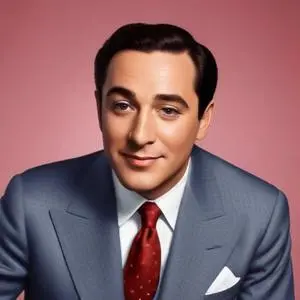The Visionary Producer: Irving Thalberg's Enduring Legacy
The Boy Wonder of Hollywood
Irving Thalberg, known as the "Boy Wonder" of Hollywood, was a trailblazing film producer who revolutionized the motion picture industry during its early years. With a unparalleled knack for selecting scripts, choosing actors, and gathering production staff, Thalberg produced some of the most iconic films of the 20th century, including
Grand Hotel,
China Seas,
A Night at the Opera,
Mutiny on the Bounty,
Camille, and
The Good Earth.
A Life of Defiance and Innovation
Born on May 30, 1899, in Brooklyn, New York, Thalberg was diagnosed with a congenital heart disease that was expected to cut his life short. However, this prognosis only fueled his determination to make a lasting impact. After graduating from high school, Thalberg worked as a store clerk and took night classes in typing to acquire new skills. His big break came when he landed a secretarial position with Universal Studios' New York office, which eventually led to his promotion as studio manager for its Los Angeles facility.
Rise to Prominence
During his three years with Universal, Thalberg oversaw the production of over a hundred films, including the 1923 classic
The Hunchback of Notre Dame. His innovative approach and keen eye for storytelling caught the attention of
Louis B. Mayer, who partnered with Thalberg to establish Metro-Goldwyn-Mayer (MGM) in 1925. At just 26 years old, Thalberg became the head of production at MGM, leading the studio to unprecedented success.
A New Era of Filmmaking
Thalberg's 12-year tenure at MGM was marked by unparalleled creativity and innovation. He introduced horror films to audiences, pioneered the use of story conferences with writers, and implemented sneak previews to gather early feedback. His unyielding dedication to quality led to extensive reshooting of scenes to improve the final product. Thalberg's influence extended beyond the studio, as he co-authored the Production Code, a set of guidelines for morality that would shape the industry's standards for decades to come.
A Legacy of Excellence
Throughout his career, Thalberg produced over 400 films, many of which bore his distinctive imprint. His contributions to the film industry are still felt today, and his influence can be seen in the work of countless filmmakers and producers who followed in his footsteps. Despite his untimely passing at the age of 37, Thalberg's legacy continues to inspire and captivate audiences around the world.
Personal Milestones and Key Life Events
- May 30, 1899: Born in Brooklyn, New York
- 1923: Oversaw production of The Hunchback of Notre Dame
- 1925: Became head of production at MGM
- 1932: Married actress Norma Shearer
- September 14, 1936: Passed away at the age of 37
Impact on Modern Society
Thalberg's films not only entertained but also projected a seductive image of American life, showcasing the country's vitality, democracy, and personal freedom. His work helped shape the public's perception of Hollywood and the film industry, cementing its status as a cultural powerhouse.
Quote
"The most important thing in pictures is the story. If the story isn't there, you can't fix it with production values." – Irving Thalberg
FAQ
What was Irving Thalbergs role in Hollywood?
Irving Thalberg was a pioneering American screenwriter and producer who played a crucial role in shaping the Hollywood film industry. He co-founded Metro-Goldwyn-Mayer (MGM) and produced over 400 films, including classics like Ben-Hur and Mutiny on the Bounty.
What was Irving Thalbergs contribution to film production?
Irving Thalberg revolutionized film production by introducing the concept of the unit system, which divided the production process into separate units, each responsible for a specific task. This innovation increased efficiency and productivity, allowing studios to produce more films at a lower cost.
What were Irving Thalbergs most notable films?
Irving Thalbergs most notable films include The Unholy Three, The Barretts of Wimpole Street, and Grand Hotel, which won the Academy Award for Best Picture in 1932.
What was Irving Thalbergs relationship with Norma Shearer?
Irving Thalberg was married to actress Norma Shearer, and their partnership both on and off screen was crucial to the success of MGM. Thalberg often produced and promoted films that showcased Shearers talents, and their collaboration produced some of the most memorable films of the 1920s and 1930s.
What was Irving Thalbergs legacy in Hollywood?
Irving Thalbergs legacy in Hollywood is that of a visionary producer and innovator. His contributions to film production, his championing of new talent, and his commitment to quality filmmaking have inspired generations of producers and filmmakers.

